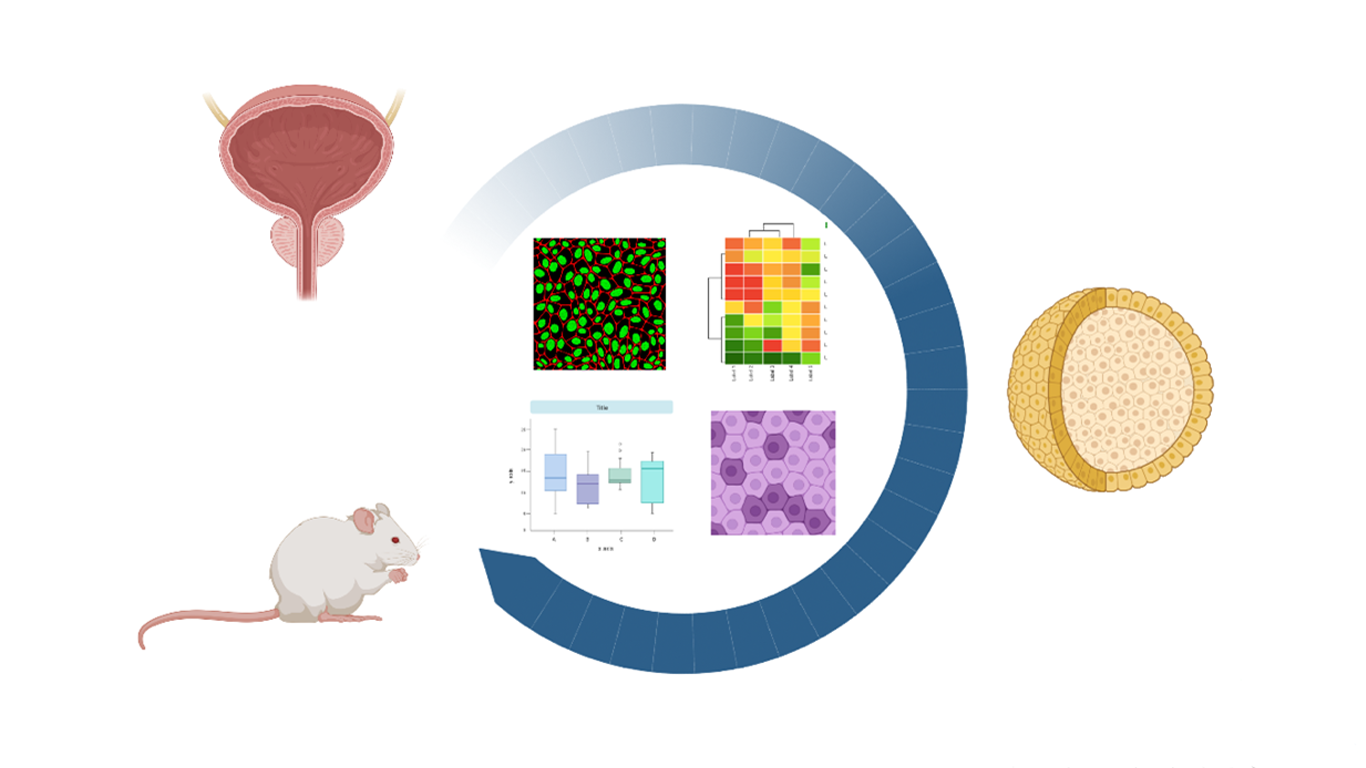Organoids as models for new rational treatments of bladder cancer
Figure 1 – schematic representation of the main analysis to understand biological features of bladder cancer.
Abstract
A new study on patient-derived bladder cancer organoids and xenografts evolution and drug response, revealed their potential as models for the development of new rational treatments [1]. The study offers the opportunity to understand cancer relapse after primary treatment and lay the basis for tumor recurrence prevention
Discussion
The Bladder Cancer
Bladder cancer is a spread and complex disease with varying clinical outcomes depending on its stage and risk factors. It can appear under two main different forms: non-muscle invasive and muscle invasive. The first one appears in the first stage of disease and nowadays frontline treatment is transurethral resection. The second one occurs in latest stages and nowadays cure strategy consists in chemotherapy followed by radical cystectomy [2]. Even if Bladder cancer is the fifth most prevalent cancer in the USA, is understudied and only few labs are working on research for new rational treatments. The necessary development of effective cure strategies requires a comprehensive understanding of the underlying biology of both morphologies. Patient-derived organoid models have emerged as a valuable tool for investigating various aspects of cancer biology [3].
Bladder Cancer Organoids
Lee and collaborators [1] generated a biobank of 22 patient-derived organoid lines from fresh transurethral resection (TUR) samples, including the low-grade non-muscle-invasive and the high-grade muscle-invasive cancer. They subsequently grafted cells from patient-derived organoid lines into immunodeficient NOG mice [4]. Through H&E staining of paraffin sections, and targeted sequencing they investigated histopathological features and mutational profiles of the organoid lines. Finally, they focused on the investigation of tumor evolution and drug response in vivo, leveraging orthoptic xenografts (Figure 2).
Evolution and Characterization of Organoids and Xenografts
The H&E staining results showed a strong morphological concordance between parental bladder tumors and respective organoid lines, and targeted sequencing revealed high correlation of their matched mutational profiles. Genetic comparison of primary organoids, xenografts and xenograft-derived organoids (Figure 2) revealed a clonal evolution in culture, with linear and branched patterns resembling those observed in urothelial cancers in vivo. Immunofluorescence analysis of markers expression highlighted two different behaviors: 36% of samples was phenotypically stable, maintaining a luminal subtype, while the rest exhibited plasticity, shifting from a mixed or luminal subtype in the parental tumor to a basal subtype as organoids. Finally, testing organoid lines’ response to 40 drugs, relevant for tumor treatments, the researchers found that the responses observed in culture could be recapitulated when assayed in an in vivo context.
Implications and Future Prospects
The results of this work highlight the potential of patient-derived organoid models in precision cancer medicine. This study confirms that is possible to improve cancer treatments, such as chemotherapy, with the identification of druggable targets thorough the characterization of the mutational profiles and the screening of the therapeutic compounds. Organoid lines from patients with recurrent bladder cancer may offer insights into tumor evolution and drug response in primary solid tumors. Despite the results shown represent an innovative starting point for development of new rational treatments, there is a need to pursue research, in order to better understand mechanisms of clonal evolution and cellular plasticity.
Limitations of the Study
The study presents several limitations. First, clonal evolution shown by organoid culture is due to selection pressures, that could be different in culture, changing the clonal evolution patterns in each line and, consequently, affecting results. Second, the shift in marker expression noticed in organoid steps is due to the lack in culture of stromal microenvironment, that represents a non-accurate simulation of what happens in vivo. Finally, the correlation between phenotypic stability or instability and pathology, mutational profile, or drug response remains unclear. In this study the researcher did not focus on the correlation between drugs responses, pathology and mutational profile with phenotypic stability, which is fundamental in order to better understand the disease’s progression and develop new non-invasive cure strategies.
References
- Lee S. H., Hu W., et Al., Tumor Evolution and Drug Response in Patient-Derived Organoid Models of Bladder Cancer, Cell 173, 515-528 (2018)
- Kamat, A.M., Hahn, N.M., et Al., Bladder cancer, Lancet 388, 2796–2810(2016).
- Drost A., Clevers H., Translational applications of adult stem cell-derived organoids. Development, 144 (6): 968–97(2017)
- Jäger W, Moskalev I, et al., Ultrasound-Guided Intramural Inoculation of Orthotopic Bladder Cancer Xenografts: A Novel High-Precision Approach. PLOS ONE 8(3): e59536(2013)
- https://www.biorender.com


